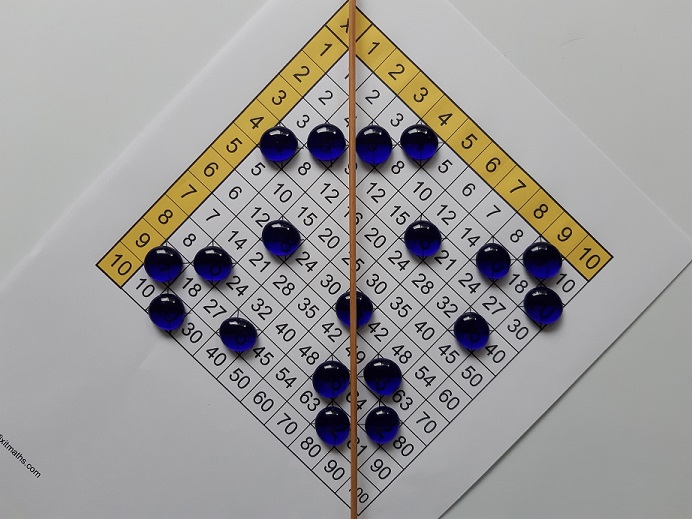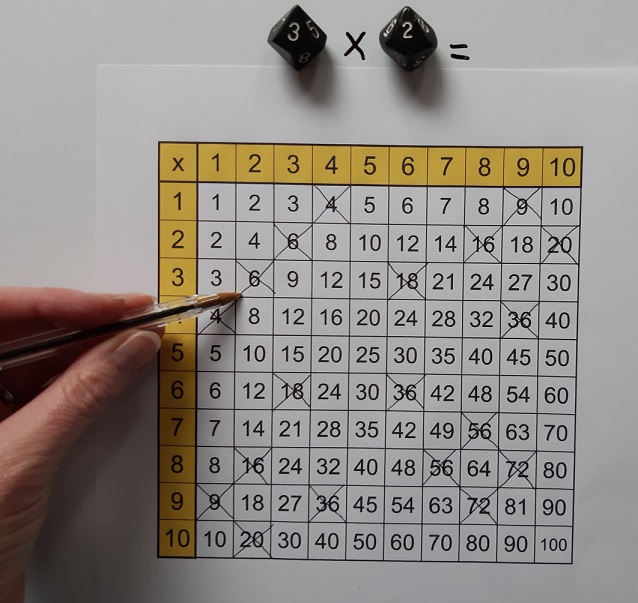Fact fill
A game for 2 or more players
This game reinforces the commutative nature of multiplication: 2 x 6 equals the same as 6 x 2. The symmetrical nature of the multiplication square can be highlighted by colouring or placing counters on the crossed out numbers and looking at the square diagonally from one corner.
You will need:
How to play
Players take turns to roll the dice and multiply the numbers rolled together to find the product. They then locate the answer in the appropriate row and column and crossing it off. Usually, two numbers may be crossed off.
e.g. Player 1 rolls 5 and 2, so 5 x 2 = 10. They may cross off both the 10 which is found in the row of 2s and the 10 in the column of 2s.
The winner is the first person to cross off a number that completes an unbroken line of four, either horizontally, vertically or diagonally.
A point for discussion may be why some multiplication facts only allow one number (those found along the diagonal of the multiplication square) to be crossed off. E.g. rolling two 7s means that 49 is only crossed off once. This can lead to exploring square numbers.

